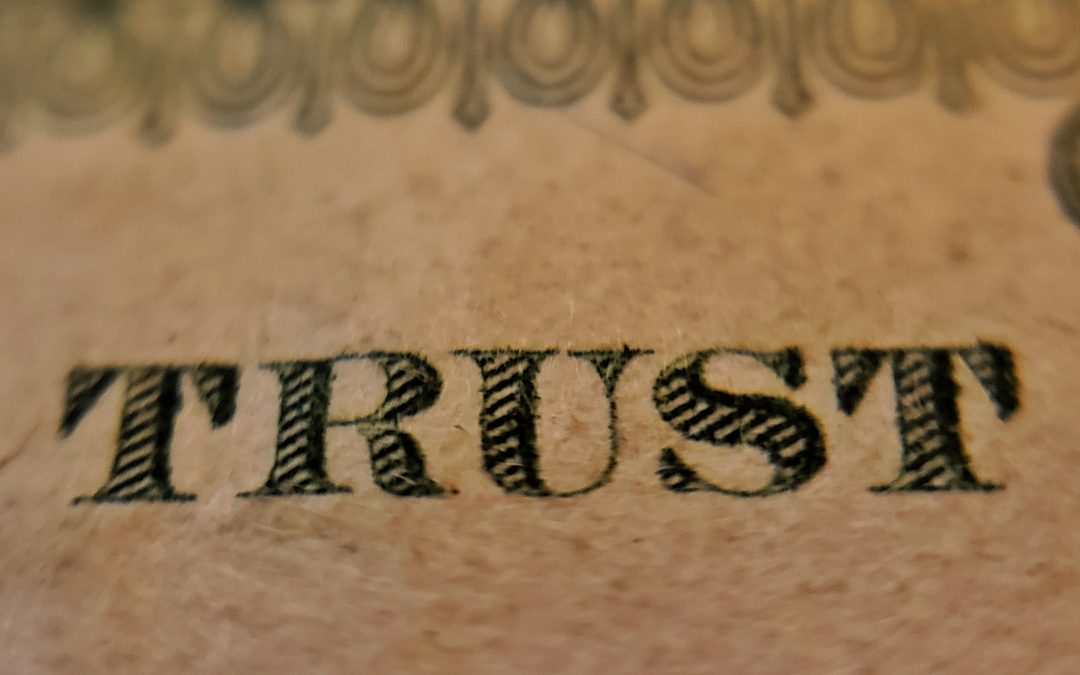Last month we shared information on funding your Revocable Living Trust. This month we decided to go back to the very beginning and explain what a Revocable Trust is and how they started in the first place.
What is a Revocable Living Trust? Trusts began in England in the Middle Ages. In those days, women in England could not own property. If a knight with young children were to be killed in battle, his wife could not inherit the property, and his children would be too young to inherit. That would be a problem. Therefore, before a knight went out to battle, he would go to a friend he could trust. He would give his friend the deed to his property. His friend would promise that if the knight were killed in battle, his friend would manage the property for him, and use the rental income to support his wife and children, until the oldest son became old enough to take over, at which time the friend would give the deed to the oldest son. When the knight’s friend promised to do these things, the knight could go off to the battlefield with peace of mind.
This practice among the knights became so common that it led to the enactment in 1536 of a law called the Statute of Uses under King Henry VIII. The Statute of Uses is still the basis of trust law in England. From England, the concept of trusts came to America with the colonists. Thus, even though most of us have only been hearing about trusts for the last 20 or 30 years, trust law has been established for centuries.
A trust is created by an agreement, usually called a “trust agreement.” Many trust agreements are 20 to 60 pages long. They can be shorter or longer. You can create and have more than just one trust at any given point in time—there’s no limit to the number.
There are 3 main roles that people play in a trust. The person who puts his property into the trust is called the “Settlor,” because he is settling his affairs in regard to that property. The Settlor puts his property into the trust by giving it to a person who is called the “Trustee,” because he is being trusted by the Settlor. The Trustee holds the legal title to the property and can sell the property, manage it, and invest it. However, the Trustee cannot take the property for himself or use it for himself. The Trustee has a strict duty to take care of the property and to give it to or use it for a person who is called the “Beneficiary” because that person benefits from the trust.
The Settlor and the Trustee both sign the Trust Agreement. The trust becomes active or “funded” when the Settlor puts property into the name of the Trustee. The property can be anything of value: land, house, automobiles, bank accounts, stocks and bonds, mutual funds, jewelry, etc.
The Trust Agreement usually gives the Trustee broad powers, so that the Trustee can do anything with the trust property except take it for himself. The Trust Agreement also names the Beneficiaries and says how and when the Trustee is to give or “distribute” the property to the Beneficiaries. Many trusts say that when the Settlor dies, the Trustee will distribute the trust property to the Settlor’s children, equally. Some trusts are “discretionary.” They give the Trustee the discretion—or choice—to give to the Beneficiaries whatever amount of money the Trustee decides is needed by the Beneficiaries for their health, education or support. This kind of discretion can be very useful when the Beneficiaries are young children or for other reasons are not able to handle their own finances well.
Most of the trusts people have are “self-trusteed revocable living trusts.” In this kind of trust, the Settlor gives property to himself as Trustee, to hold for the benefit of himself, the Beneficiary. The same person is in all 3 roles! As Trustee, he has full control of the trust property and can invest it and manage it himself. He can also distribute to himself as Beneficiary any amount or all of the trust property at any time. He has full control of the trust, has full use of the trust property and yet, technically, he doesn’t own the property – the trust does. Therefore, if he dies, the property does not have to go to court for probate. The Trust Agreement says who the next Trustee or “Successor Trustee” will be when the original Settlor-Trustee-Beneficiary dies, and the agreement also says who the next Beneficiaries will be. When the Settlor dies, the Successor Trustee gives the property to the Beneficiaries, without having to go to court.
This kind of trust is called a Revocable Living Trust. It is “Revocable” because the Settlor can “revoke” or cancel the trust at any time and take his property back; “Living” because it is created while the Settlor is living, as opposed to a “testamentary trust” which is created by a will when a person dies; “Trust” because the Trustee is being trusted to hold property for the Settlor.
In addition to “Revocable Trusts,” there are also “Irrevocable Trusts” that come in many different flavors or types. I’ll explain Irrevocable Trusts in a future column. Next month I will go into more detail discussing the Revocable Living Trust Trap!
This column is for general information only and is not tax or legal advice. The facts of your case may change the advice given. Do not rely on the information in this column without consulting an estate planning specialist.

